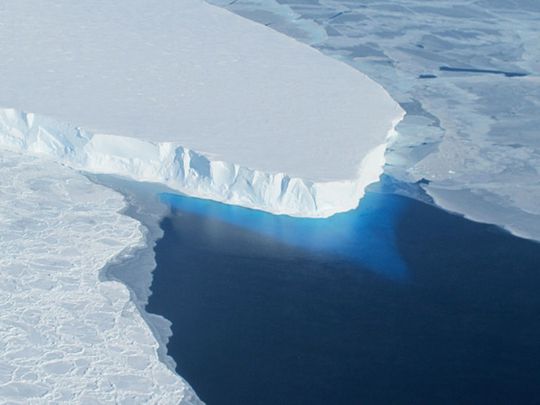
There exists a place on Earth that is the size of the US and Mexico combined – and it has a permanent population of zero people. Welcome to Antarctica, the land of glaciers.
Click start to play today’s Word Search, where you can spot a ‘glacier’, among other frosty words.
Although Antarctica is so far away from human civilisation, it’s essential to it. Scientists have long known that the biggest impact of climate change can be observed on this continent – specifically on its western coast, where lies the Thwaites Glacier.
The region is so remote that only 28 people have ever set foot on it. According to a May 2017 report in US-based Rolling Stone magazine, scientists who have visited the glacier are mapping the hidden topography beneath its sheets of ice – and they’re also gaining insight into a potential future global disaster.
With a rapidly warming world, one of the most significant things scientists want to know is how quickly the ice will melt, and seas rise. About 60 per cent of the Earth’s fresh water lies frozen on Antarctica, in the form of ice sheets that can be nearly 4.8km thick, according to UK-based British Antarctic Survey (BAS). And if they were all to melt, it would mean a cataclysmic 70m rise in the global sea level.
According to the United Nations’ website, about 40 per cent of the world’s population lives within 100km of a coastline. So, rising seas could very quickly become catastrophic. At the centre of this alarming reality is the Thwaites Glacier, which has been nicknamed the ‘Doomsday Glacier’ in news reports. The BAS estimates that it currently loses about 50 billion tons more ice every year than is replaced by new snowfall, and this rate has increased even further over the past 30 years.
In September 2022, researchers published a study in the UK-based journal Nature Geoscience, describing how the Thwaites Glacier’s ice shelf – a large extension that grows off the end of the glacier, where it meets the water – is expected to break up over the next couple of decades. They warned that when (not if) the entire glacier is lost, it would cause global sea levels to rise by 65cm. And if adjoining parts of west Antarctica’s ice sheet are lost, it would mean a global sea level increase of nearly 3.3m.
But it doesn’t mean we cannot have hope. Reducing greenhouse emissions can go a long way towards preserving Thwaites, at least for a while.
Is Thwaites truly a ‘Doomsday Glacier’? It’s a controversial nickname. But it’s worth acknowledging that if the coldest place on Earth is melting, and melting fast, it’s about time the world wakes up and takes notice.
What do you think should be done? Play today’s Word Search and tell us at games@gulfnews.com.



